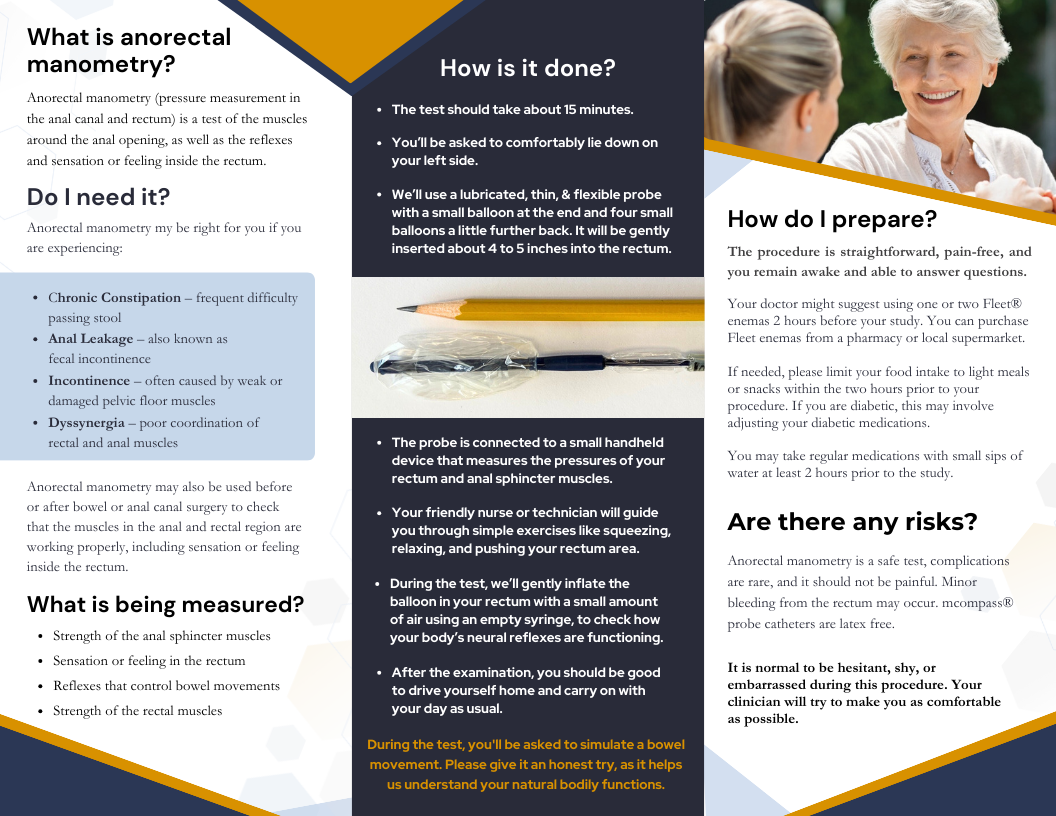How to Explain Anorectal Manometry to Your Patients
Introduction:
Anorectal Manometry (ARM) is a diagnostic procedure used in gastroenterology clinics. This procedure evaluates the function of the anal sphincters and rectum. ARM can help diagnose and understand disorders like fecal incontinence, constipation, and pelvic floor dysfunction. However, explaining ARM to patients in a clear and understandable manner can be challenging for clinicians. In this guide, we will provide clinicians with valuable insights and strategies for educating patients about ARM to enhance their understanding and cooperation throughout the procedure.
Understanding the Basics of ARM:
At its core, ARM measures the pressures within the anal canal and rectum to assess neuromuscular function. Doctors can tell patients that ARM helps diagnose different anorectal disorders like fecal incontinence, constipation, and pelvic floor dysfunction. Emphasize that ARM is a minimally invasive procedure performed in the clinic setting.
Communicating the Procedure:
When discussing the ARM procedure with patients, it's essential to convey the process in simple terms that the patient can understand. Explain to the patient that a small, flexible catheter is inserted into the rectum to measure muscle function and sensation. Assure patients that the procedure is quick, taking about 15 minutes, and is well-tolerated, requiring no sedation.
Addressing Patient Concerns:
Patients may have concerns about discomfort or embarrassment during the ARM procedure. Therefore, it is important to have patience and compassion. Medical staff should reassure patients that discomfort is minimal, akin to a slight pressure sensation. Emphasize the importance of the procedure in diagnosing their condition and guiding treatment decisions. Explain that other diagnostic tools do not provide the valuable insights achieved here. Encourage patients to ask questions and express any concerns they may have. Recognizing that each patient’s apprehensions may vary, medical staff should tailor their approach accordingly.
Providing Resources and Support:
Clinicians can enhance patient education by providing informative materials or resources about ARM. Medspira offers a brochure for patients that explains what ARM is, what the patient can expect from the procedure, and how to prepare for it.

Medspira also provides a comprehensive video that clinicians can show to their patients that explains ARM in simple terms for patients.
Conclusion:
Educating patients about ARM is vital to ensure comfort and cooperation during the procedure. By utilizing clear communication, addressing concerns with empathy and understanding, and emphasizing the benefits of ARM, clinicians can empower patients to undergo the ARM procedure with confidence, ultimately leading to improved diagnostic accuracy and better treatment outcomes.
Schedule Your Free Consultation
Get in touch with us to learn how our products can make an impact on your practice.
